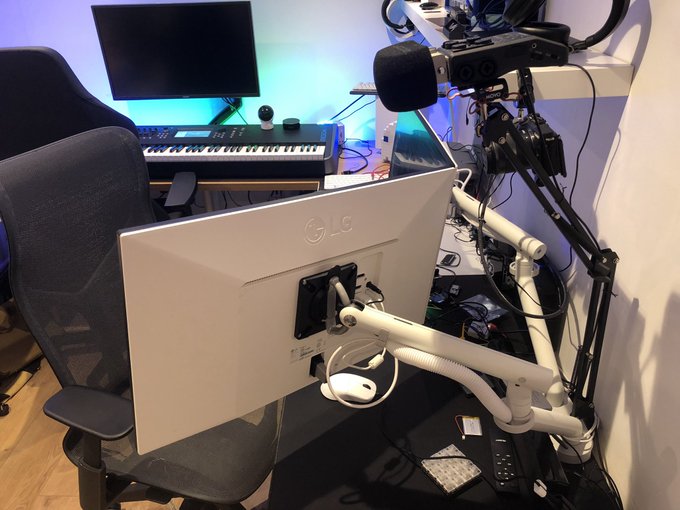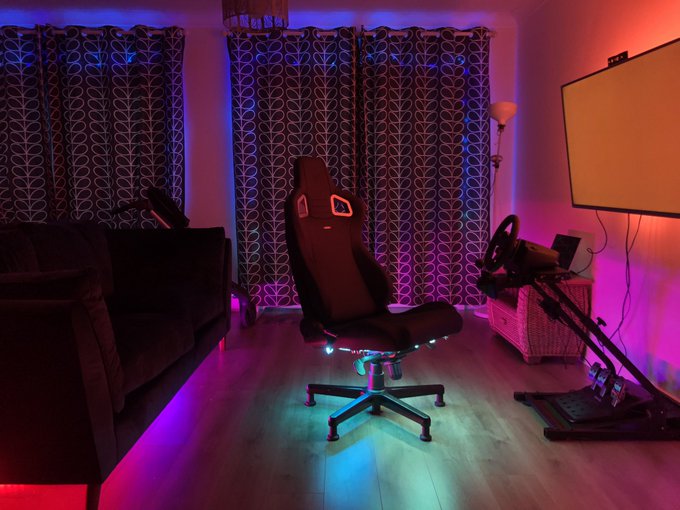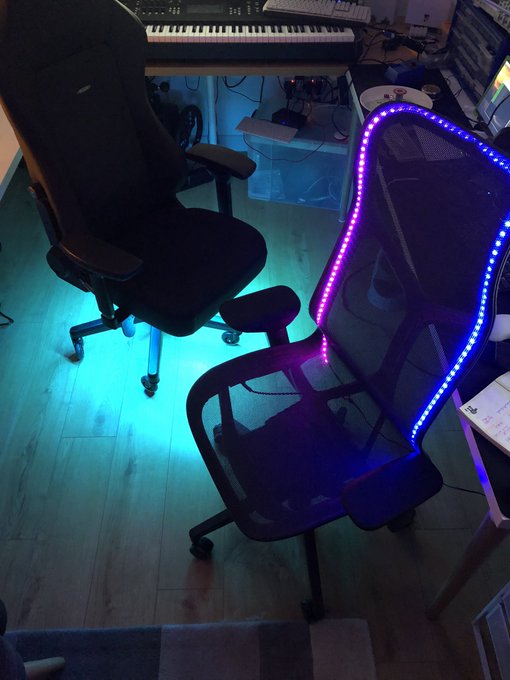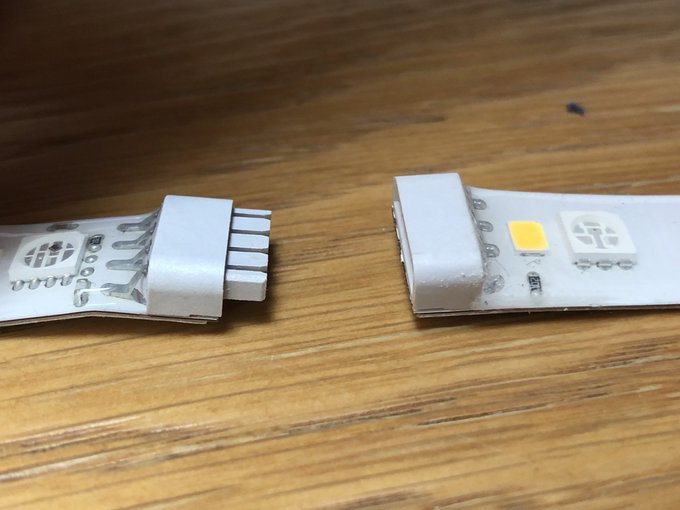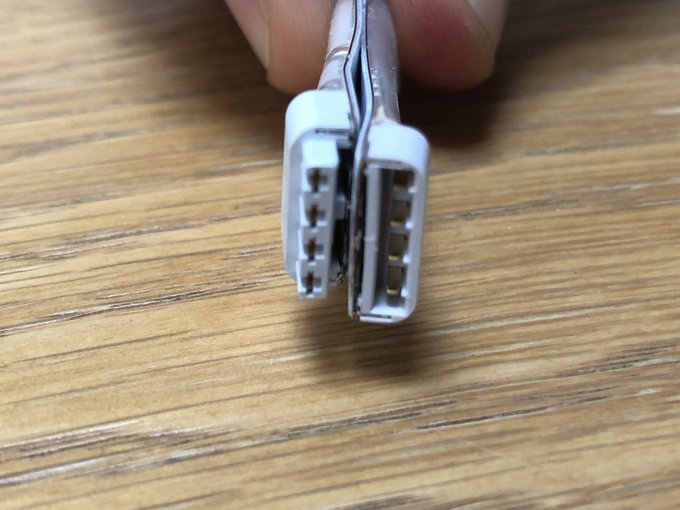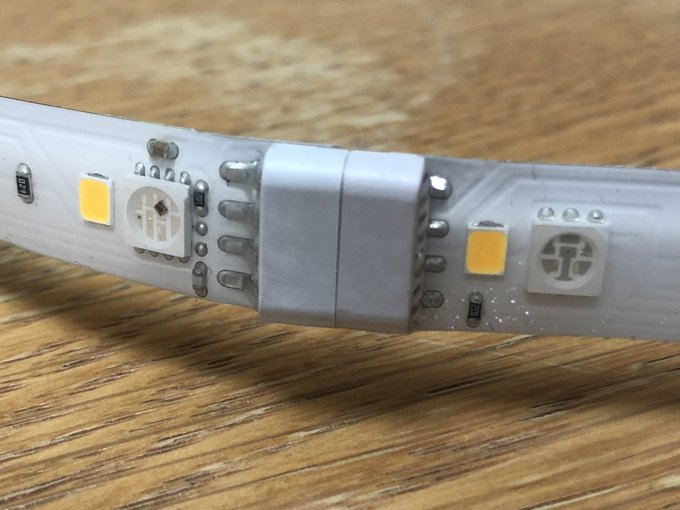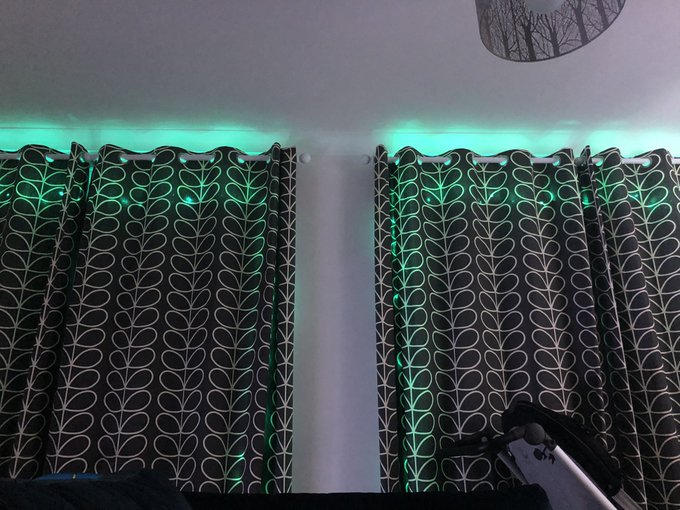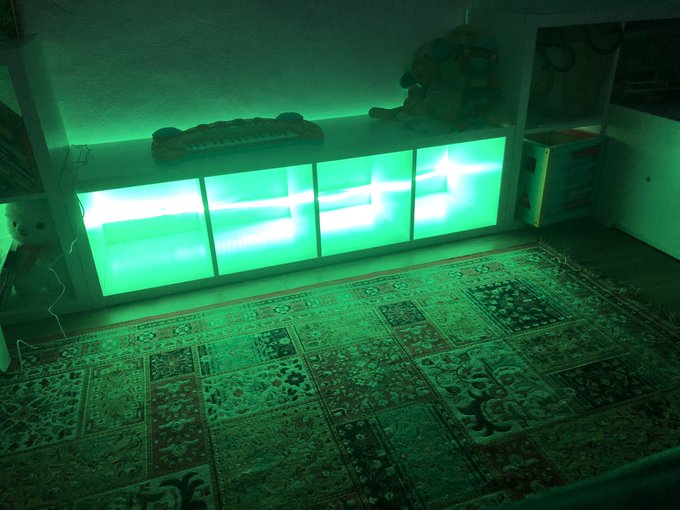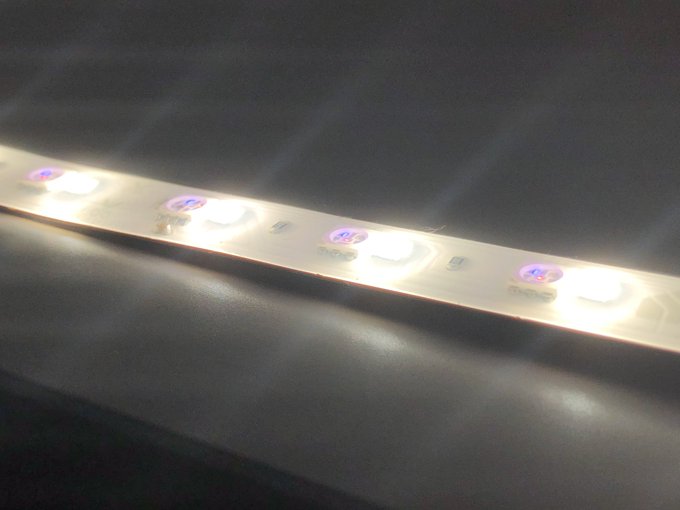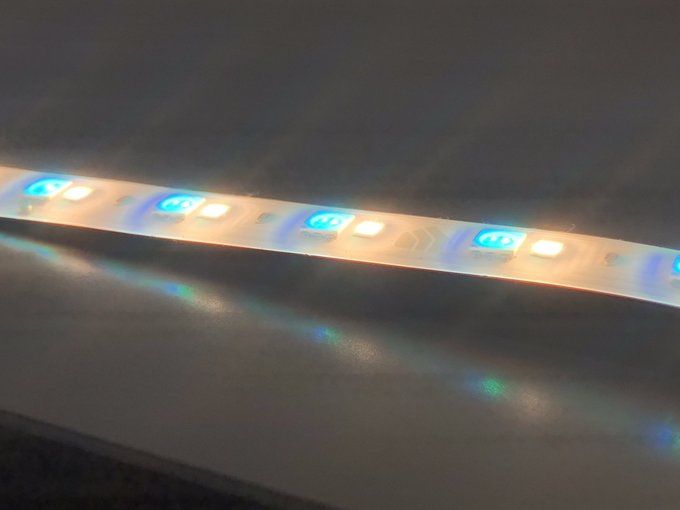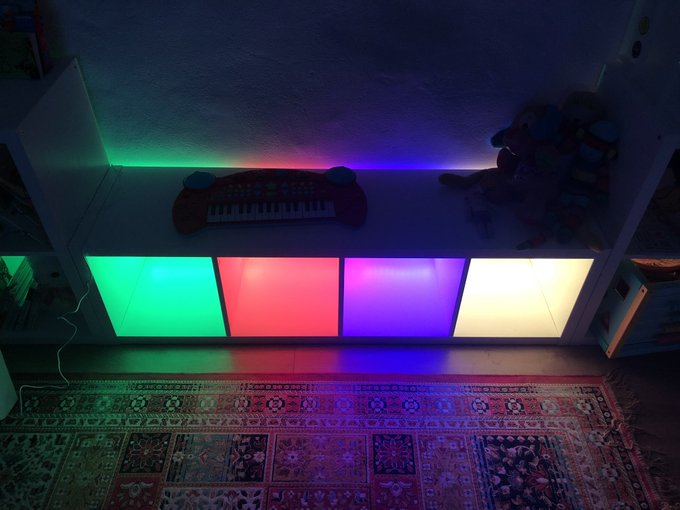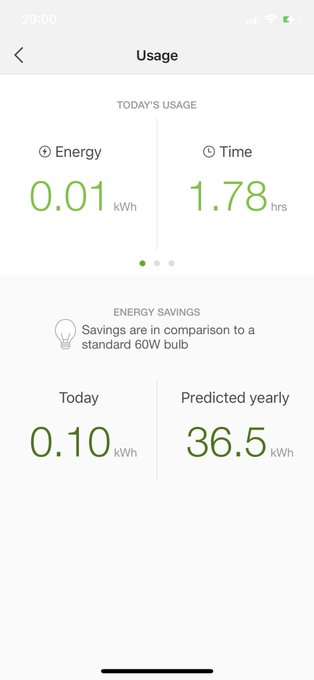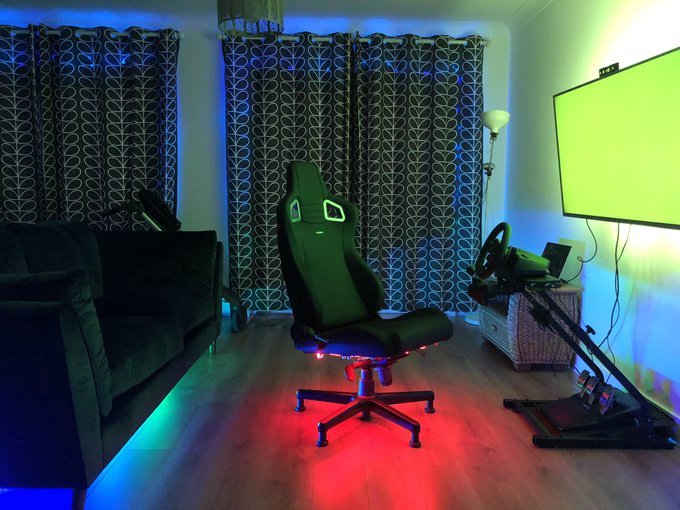TP-Link KL430 smart LED strip review
Okay let’s get the elephant out of the room. I’m a “maker” by trade and helping other people build their own RGB lighting setups is – along other things – what I *do*. I’ve spent countless hours working on Python libraries to make LEDs of various types light up, and I watch over the rpi_ws281x library that makes NeoPixels even approachable with the Pi… though I’m not sure I’m quite smart enough to have written it!
Off the shelf lighting might seem like an odd fit for someone with more than enough experience to DIY their own for a fraction of the cost… so why am I testing TP-Link’s LED strips?
Well- for one- who else is more qualified? It’s rare that I get to test something that intersects what I know so well. Computers are still mostly an operational mystery to me, monitors are just magic pixel boards and I’ve barely scratched the surface of Thunderbolt devices.
Crazy focus nook pic.twitter.com/uZdR3rl2e0
— Phil Howard (@Gadgetoid) May 11, 2021
And- perhaps more importantly to me- making my own LED lighting setups (which I do for chairs if you’ve been living under a rock) feels a bit too much like work. There’s something uniquely satisfying about skipping all the effort and just plugging in a finished, functional and reliable product. The TP-Link KL430 is exactly that. And if you’re lazy – like me – it certainly doesn’t cost more than the parts and time you’d have to put in to modestly recreate it.
DIY pic.twitter.com/j4amyb7gax
— Phil Howard (@Gadgetoid) May 10, 2021
What really drew me in to TP-Link’s KL430 plug-and-play LED strips were their connectors. TP-Link have gone the distance to create a push-fit connector that makes connecting individual LED strips an absolute breeze. Connecting LED strips together is a great point of contention for my custom setups, and I’m not happy with the clip-fit, solderless connectors I’m using at the moment- I regularly need a little bulldog clip to ensure a reliable connection.
Connectors a hobbyist can only dream of ? pic.twitter.com/b2QK51sRvL
— Phil Howard (@Gadgetoid) May 5, 2021
The same connector that bridges LED strips together is present on the controller so the whole setup is effortless push and play. They have a satisfying snap, stay together reliably and appear to form a stable connection. TP-Link claim the KL430 will drive up to 8m of LEDs and they ship with 2m- each strip being 1m with a connector at each end.
TP-Link have cost-optimised their LED strips by using groups of “dumb” LEDs paired with individual controller chips. Each strip is divided into groups of 6 RGB LEDs with one “smart” LED controlling the group followed by five regular RGB LEDs. In-line with these LEDs is an additional white LED element, allowing warm/cool white lighting that fills out a better range of the spectrum. Trying to light a room with just a mix of Red, Green and Blue light doesn’t work well since they will brightly emphasise very narrow bands of colour to the exclusion of the remaining spectrum. This is particularly noticeable if you try to photograph something under RGBs approximation of “white” light. Having this additional white element allows the KL430 to serve as useful, functional lighting (think kitchen counter tops) when it’s needed.
While some may baulk at the idea of an expensive RGB LED lighting product not having individually controlled elements – us makers are spoiled by price insensitivity sometimes – the KL430 isn’t meant to be used in places where an individual LED matters. Obvious cost optimisations aside, TP-Link understand that you’ll always be seeing the diffused average of several adjacent LEDs, so groups of 6 make a lot of sense. Each 1m LED strip has eight groups of six LEDs for a total of 48 RGB LEDs. These are joined by an additional 48 separate white LEDs. With effectively 48 RGBW LEDs per meter these sound a little underwhelming but they more than make up for this with pure unadulterated brightness. TP-Link’s lighting effects are carefully designed to face colours between the zones and the result looks surprisingly good even directly, and really good when diffused across a wall or lighting a surface or space.
Coordinated! pic.twitter.com/o07yLt9yvg
— Phil Howard (@Gadgetoid) May 5, 2021
While I’m not going to tear apart the KL430 – I really like it okay! – the FCC have done the hard work for me (https://fccid.io/TE7KL430/Internal-Photos/10-Internal-Photos-rev1-4348637.pdf) and revealed the WiFi chipset inside to be a Qualcomm QCA4010. This appears to be a fairly modest (compared to the ESP8266 or ESP32 you often find in these applications) MCU paired with a comprehensive WiFi platform. It must be plenty sufficient, though, since controlling the lights via TP-Link’s KASA app does not feel unresponsive or limited in any way. If you’re looking for LEDs that support an off the shelf alternate, open firmware … I don’t think these will ever be it. I’ve neither heard of this Qualcomm chip, nor can I access any of the documentation for it- in stark constrast to the ESP boards which are a maker staple. If you want a reverse engineering challenge though…
The choice of MCU and LED groupings all point to careful cost optimisations that suggest TP-Link wanted to build a product with staying power and enough margin to justify their – admittedly pretty decent – KASA app.
The KASA app is the hub for all of TP-Links Internet Of Things products and I had already become accustomed to it through their HS1 sockets which I’m using to control lamps in the living room. Adding the light strip was straight forward – I think most of us know the new-IoT-device dance by now – and once added it’s a couple of taps to turning it off/on, setting animated effects or switching to more utility warm/cool white lighting.
Ooooh these @TPLINKUK light strips have an auxiliary white LED paired with every RGB LED for customisable colour temperature and better colour reproduction! pic.twitter.com/FaODNexWR4
— Phil Howard (@Gadgetoid) May 5, 2021
The app includes 14 predefined effects covering everything from rainbows to candle flicker, and while there’s disappointingly no way to sequence your own effects (they might be baked into the device itself) you can customise the existing ones with colours of your choice and tweak the animation speeds. You can also apply static colours across the LED zones which is great for lighting individual Kallax shelves with bold contrasting colours.
Oh god yes! @TPLINKUK pic.twitter.com/TxjqSnvBSw
— Phil Howard (@Gadgetoid) May 5, 2021
While the app app is relatively no-frills in terms of custom patterns and sequencing settings, it has the typical scheduling options you would expect from a “smart” lighting product. As an added-bonus it will also show you the energy usage, on-time and a prediction of daily/yearly energy savings vs a typical 60W bulb- albeit these are somewhat redundant with today’s everything-LED landscape. In an increasingly environmentally conscious world, though, having some idea of usage can’t hurt.
For better or worse…. The app will tell you exactly how much ? pic.twitter.com/ShW1bklf6H
— Phil Howard (@Gadgetoid) May 5, 2021
Cost is a contentious issue with RGB lighting setups. A single extra meter (KL430e) will cost you a whopping £20. While it’s easy to justify this price by pointing to the excellent connectors and relatively nice quality product that TP-Link have put together it does make me wince a little to think an 8m setup would cost around £170! (Albeit this is perfectly in keeping with the cost of the Twinkly LEDs I praised).
That said I could imagine these lights being worth using replace our ancient, non-LED under-cabinet kitchen lights. They’d likely be a lot longer lived, too, we’ve currently got two bulbs out and it’s just not worth replacing something that’s obsolete versus just ripping out the installation and installing something a little more modern.
The KL430 is £40 at time of writing and considering that’s 2m of RGB goodness – enough to add feature lighting behind a Kallax shelf or under the edge of your kitchen cabinets – the price for entry is not unreasonable. The polished product, packaging and app aren’t necessary but nice to have. What the KL430 being you over alternatives at half the price is polish and a system that’s easy and non-destructive to scale from 1m to 8m.
Might just keep the @TPLINK lights here ? pic.twitter.com/wiMwAvQKDg
— Phil Howard (@Gadgetoid) May 10, 2021
If you’re happy with a cheap alternative with a less polished app I don’t think the KL430 have much to offer you. Otherwise I think this is an excellent example of a commodity product done really well.
And they’re a fantastic way to add a street racing neon underglow to your… sofa…
Don’t miss this opportunity to neon underlight your sofa ? pic.twitter.com/x0DrYd4otY
— Phil Howard (@Gadgetoid) May 15, 2021
